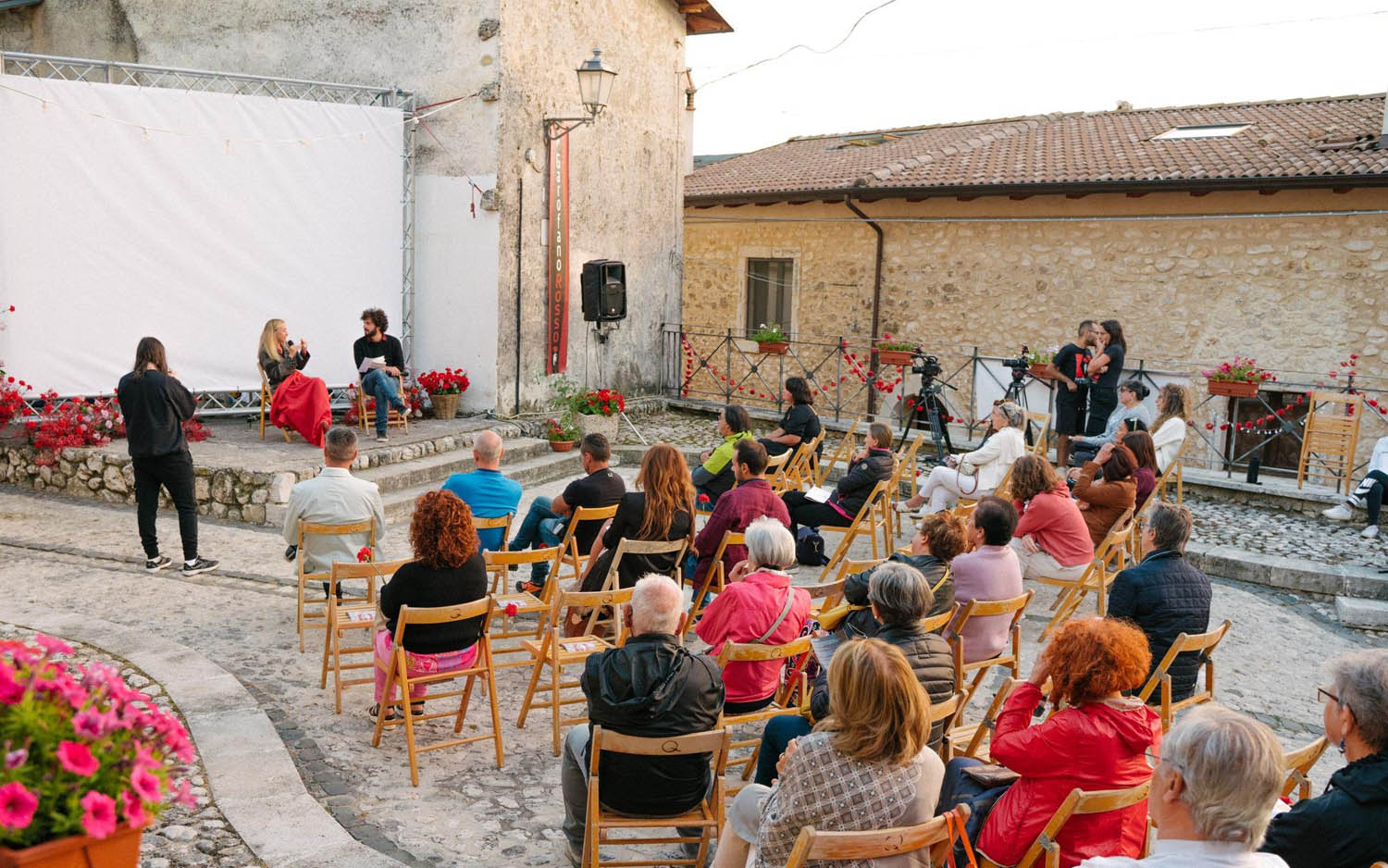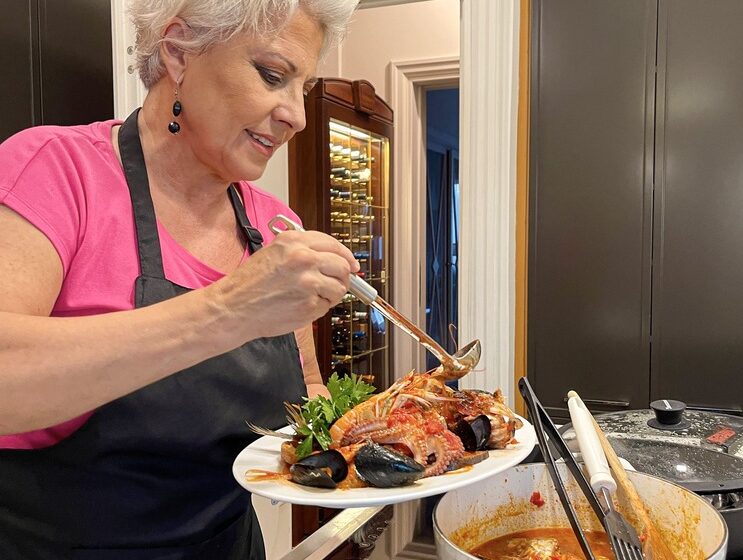
Nonna Assunta’s Fish Soup: Satisfying to the Eyes and Even More So to the Palate
Grandma Assunta, an exceptional cook at the family restaurant until she was 94 years old, was proud of her fish soup, and she had every reason to be!
It was satisfying to the eyes and even more so to the palate. It required considerable time for preparation, and likewise for the customer to enjoy it. A unique dish from the seafaring tradition with extraordinary sensory and nutritional characteristics that, in my opinion, should be presented in its monumental original form.
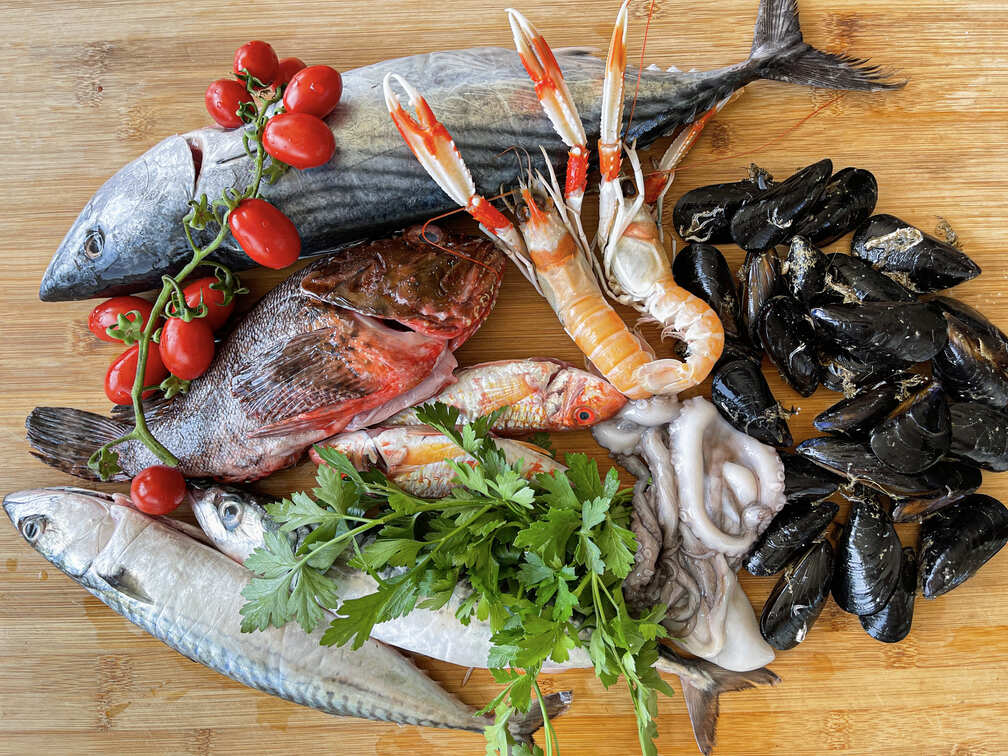
There’s no need to fuss over specific types of fish. I suggest using whatever is available at the fish market on the day, such as rockfish, red scorpionfish, tub gurnard, sea bream, greater amberjack, Mediterranean sand smelt, saddled seabream, striped seabream, greater forkbeard… all wild-caught fish of lesser value compared to the more famous sea bass and gilt-head bream because they are more bony and, being mostly herbivores, spoil more easily.
So, in the list of ingredients, I’ll simply put “fish for soup”.
Ingredients: fish for soup, baby octopus or baby cuttlefish, mussels, langoustines, anchovies in oil, peeled tomatoes and tomato puree, extra virgin olive oil, parsley, garlic, salt, stale bread.
Method:
- Start with a light sauté with two crushed garlic cloves, a bunch of parsley, and a few fillets of boneless anchovies in oil.
- Add peeled tomatoes and tomato puree and after about 15 minutes of cooking, add water (preferably mixed with steam-extracted seawater from the mussels and filtered) and simmer for another 15 minutes.
- Put the various fish into the sauce obtained, which should remain quite liquid, starting with the baby octopus as they require more cooking time, followed by the different fish, then the langoustines, and finally the mussels.
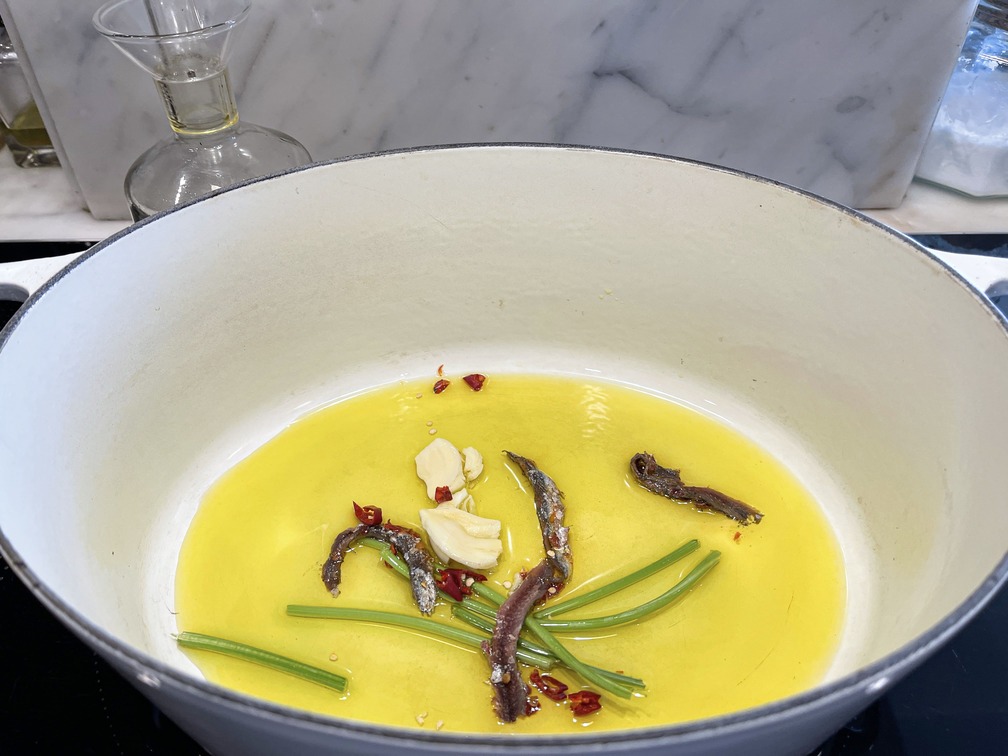
As for the mussels, some people put them in the sauce raw so they release their water naturally, but this way it’s not easy to identify a bad mussel because they all remain closed, and once opened with heat, they could contaminate the entire dish. So… be careful! Personally, I steam them open, recover and filter the seawater.
Everything should be ready in a total of 50/60 minutes, but if necessary, you can extend the broth cooking time to reach the preferred consistency.
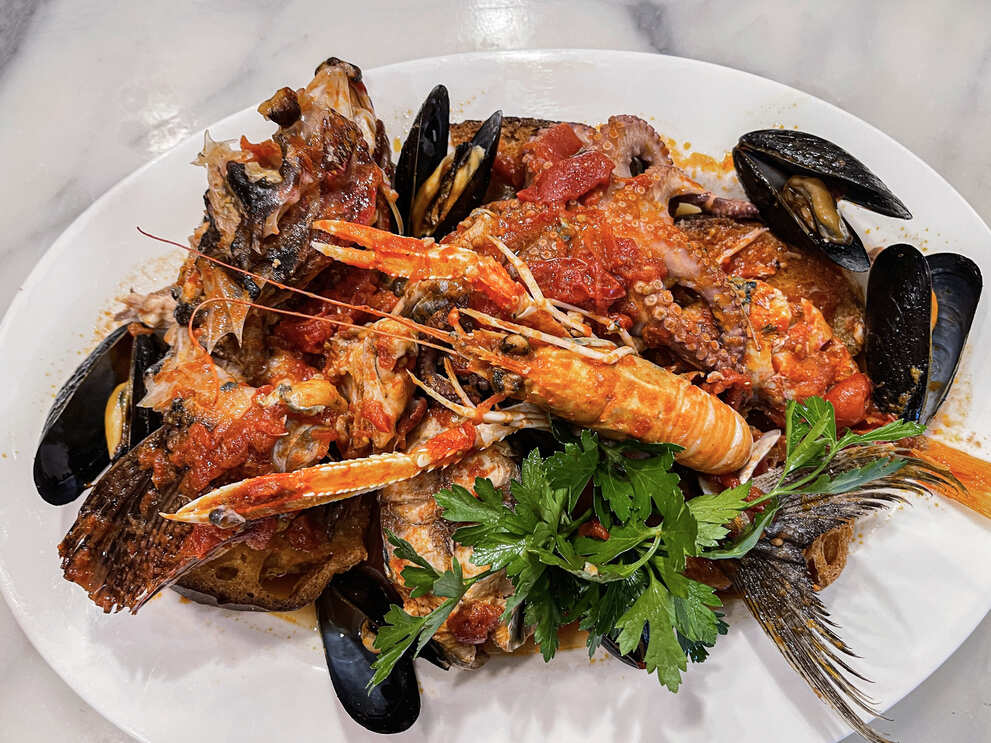
Arrange slices of toasted bread (but fried is even better!) on the bottom of a concave plate, and place the various fish, or parts thereof if they’re large, one or two langoustines, a baby octopus, and 5 or 6 mussels along the edge of the plate. Add a few ladles of sauce to moisten both the bread and the fish, and some fresh parsley leaves as a garnish.
The main condition for the success of the dish is, as always, the freshness of the fish.
Serve it at the table, get very comfortable, and… enjoy your meal!

Si occupa di cucina e di tradizioni, con un pensiero sempre sensibile verso le tematiche della sostenibilità sia ambientale che economica.
Leggi in:
![]() Italiano
Italiano






